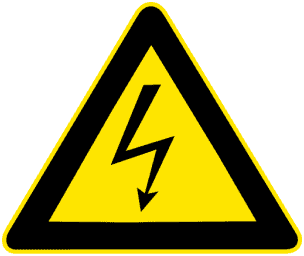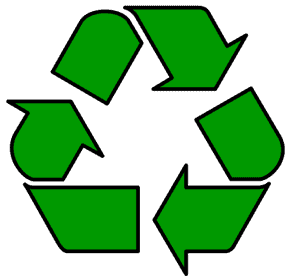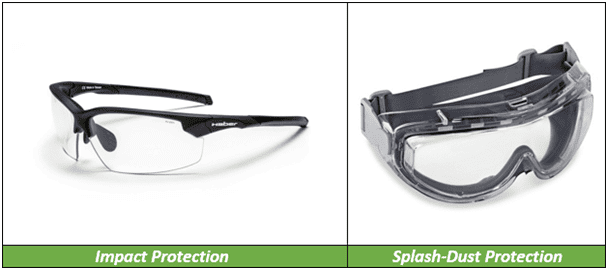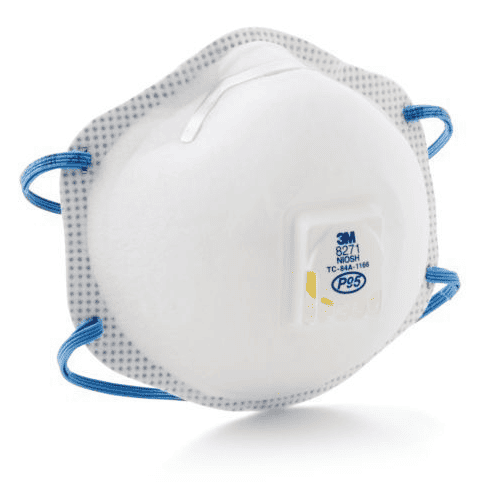Welcome to ExamNotes by CertBlaster! This edition will address A+ 220-1002 Exam Objective 4.4 Explain common safety procedures. We’ll examine the situations that require a certain safety implementation or strategy. Enjoy!
Click here for the A+ Practice Test Bundle for A+ Exams 220-1001 & 220-1002
Electrical energy will always take the shortest path to ground. The ground is a safe path for excess electrical energy, whether caused by an overvoltage condition or a short, to be safely dissipated. Always make sure your equipment is properly grounded using a three-pronged AC plug. Do not operate equipment that has this safety feature disabled. There are those who break off the ground prong on a three-pronged plug in order to fit it into a two prong outlet. Don’t use this type of plug as it is a hazard to you and the equipment. Shown below is a shock or high voltage warning label.

High voltage warning
Static electricity is an electrical charge that has built up on an object or person. This charge builds up at different rates on different objects and will dissipate through a path. When dissimilar charges are brought close together, they will attempt to equalize.
As a result, care should be exercised when handling any electrical components including low voltage components and power supplies. Remember that the circuitry of electrical components is quite fragile to misapplied voltages. When imagining electrostatic discharge (ESD), think about the electrical lightning bolt you experience when touching a doorknob after walking across a carpeted floor. That spark can be as much as 10,000 Volts. At lower voltages, this spark can be both audible and visible. The damage caused by ESD can destroy a component or shorten its life.
In order to safeguard electronics from improper voltages, the anti-static bag was developed. This bag dissipates electrical charges from external objects. Strong ESD can be seen as a flash and heard as a loud snap. Relatively imperceptible amounts of ESD may not be seen or heard but can still damage equipment.
An ESD strap or ground strap equalizes the dissimilar electrical charge between conductive objects such as your body and a PC. A conductive wrist strap with an alligator clip is worn and connected to the device in order to prevent electrical charge buildup. People carry an electrical potential that increases or decreases as charge is generated/dissipated through seemingly innocuous tasks such as walking or moving through the atmosphere. In the majority of cases, this electrical energy is dissipated whenever you contact a conductive surface.
While this discharge is silent and painless to humans at voltages of around 3,000V, this voltage level can be devastating to a circuit board that is designed to handle less than 50V. Always attach your ESD strap to an unpainted surface in order to ensure a solid connection. In the graphic below, observe the contact, where electrical energy is conducted to the alligator clip, which is then attached to bare metal in a workspace.

ESD Wrist Strap
As a technician, be vigilant about ESD issues. Take all the necessary precautions in order to safeguard sensitive equipment. In addition to ESD straps, ESD mats can be used to create an electrically neutral workspace by providing a path to ground, preventing an electrical buildup.
Self-grounding describes the process of discharging any built-up electrical energy by first touching the bare metal frame of a computer chassis before touching any internal components. While this technique is no substitute for a ground strap, this will discharge at least any energy while you remain in contact with the device.
Toxic waste is any material that can cause harm when ingested through breathing, swallowing, or touching. Many of the seemingly benign cleaners, solvents, and most notably computer and entertainment components are quite hazardous. Treat PC components as circuit boards and monitors as hazardous waste. When it comes to liquids, look for a Material Safety Data Sheet (MSDS) that describes the dangers associated with the material itself and the instructions for safe handling. Shown below is one of the more understandable warnings.

Example of a Toxic Warning Symbol
You are in contact with numerous battery types during day-to–day operations. Larger batteries store the charge for UPS devices while smaller ones power portable devices. The smallest watch batteries are used on motherboards in order to retain the CMOS. Batteries represent a danger not only from their contents but from their explosion risk. Improper handling and use of batteries can result in battery fluid leakage. A malfunctioning or overcharged battery will get very warm, will get swollen, will start to leak, and may even burst into flames.

Swollen Smartphone Battery
Toner is the “ink” used in laser printing. Comprised of wax or plastic mixed with pigment and metallic properties, toner appears as a fine, powdery black dust. Toner is one of the harder to manipulate substances as it is easily influenced by static electricity and moving air. Toner has a relatively low melting point which is useful in helping it permanently fuse to printer paper and unfortunately, anything else it contacts. Toner is contained in a sealed, removable cartridge in a laser printer. Toner is very difficult to remove from clothing and surfaces. In order to reduce the environmental impact of spent toner cartridges, most manufacturers include a prepaid return label that can be used to recycle used cartridges.

Toner Cartridge
Until the 1990s, the legacy cathode ray tube (CRT) was the primary display component used in monitors since the inception of the PC. CRTs have been replaced in most cases by flat panel LCD displays. The CRT contains mercury, lead, and other hazardous material. Additionally, the CRT contains high voltage capacitors that can hold a charge of 50,000 Volts which can be discharged in an instant. CRTs are also considerably heavier than flat panel LCD, LED, and OLED displays. Since the CRT does not contain any user serviceable components, users don’t need to open these devices and will be safe from the high voltage. Recycle CRTs according to the local government regulations.

cathode ray tube – CRT
When getting rid of cell phones and tablets, disposal is not usually the best option. Many sellers and providers of these devices will buy them back and offer a rebate option on a new device. In a time when many users upgrade their devices simply because there is a newer version available, this is an economical option. Check your local municipality for recycling options when a cell phone or tablet device needs to be discarded. Always use the most environmentally friendly option available.

Recycle Symbol
Always ensure that the unit is completely disconnected from the power source before any internal service is started. Discharge any energy stored in the components by unplugging the unit and holding the power button down for a few seconds. This will cause the PC to initiate the boot process but without a power source, the unit will dump any energy stored in the capacitors. Performing this simple procedure will reduce the possibility of any electrical shorts or harmful accidental discharge.
Remove jewelry before starting any electronic service. Doing this will eliminate the possibility of damage caused by shorts and accidental discharges. You will be safer and so will the unit you are working on. If you have an ID badge around your neck or even a necktie, be sure to tuck it inside your clothing while you are conducting your service. Avoid catching these items on any mechanical components such as fans or optical drives.
When lifting, take a second or two to consider the weight of the object and its location (floor, desk, or shelf). Now think about the best practices for lifting. Keep your back straight and use your legs to lift. Use leverage instead of muscle. A little forethought can spare you weeks of pain.
Job descriptions can cover lifting minimums but rarely will there be a maximum lifting limit. In this case, plan ahead so that you can perform the task without injury. Use carts or hand trucks in order to transport heavy objects over long distances.
In the event of an electrical fire, make every effort to remove the power. Many fires are a result of someone bypassing or ignoring simple electrical safety procedures. For example, don’t overload the outlets. Only use extension cords as a temporary solution and never plug one extension cord into another. Examine the plug and cord of a device for signs of wear. If worn, immediately replace before using. Never run a cable of any type under a rug or mat.
Fire safety codes require fire extinguishers of the indicated types to be in specific locations. Depending on their state, electrical fires can be characterized by the following classes. When the burning piece of equipment has electrical power, the fire is considered to be Class C. Once the power supply is removed, the burning piece of equipment becomes the class of the burning material, e.g. plastic or Class B. Shown below is a clearly labeled Carbon dioxide fire extinguisher.

Fire Extinguisher Label
In a previous section, we mentioned that cables should not be run under rugs or mats. To reiterate, there is no condition that justifies running cables across the open floor or walkways.
Then how do you keep people from tripping on cables? Bundle cables together using Velcro straps or zip ties.
Develop the habit of wearing eye protection at all times in the workplace. Choose the right style for the type of protection you require. Safety eyewear has impact resistant properties and there are designs that offer additional protection against chemical splashes and airborne contaminants such as dust or laser printer toner.

Eye Protection
In a dusty or dirty environment, always protect your lungs. Irritants suspended in the air may be invisible. However after examining a filter mask after a period of use, these irritants will be visible on the mask. You may be surprised.
Click here for the A+ Practice Test Bundle for A+ Exams 220-1001 & 220-1002

Air Filter Mask
Keep in mind that in the workplace, certain activities such as cable routing and disposing of hazardous waste are regulated under local codes or ordinances. Be aware of these regulations and comply with them. That concludes our ExamNotes for objective 4.4. Good luck on the test!

By continuing to browse this site, you accept the use of cookies and similar technologies that will allow the use of your data by CertBlaster in order to produce audience statistics- see our privacy policy.